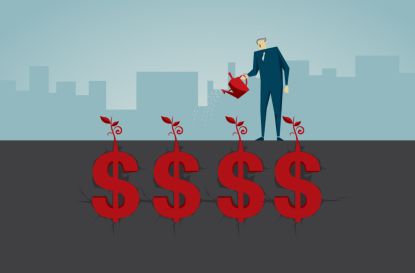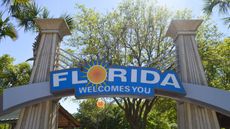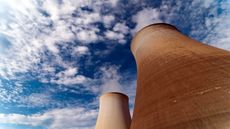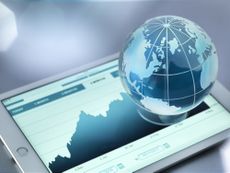Kiplinger's GDP Outlook: The Economy Shows Resilience, But Is Still Slowing
There’s still a 50% chance of recession in the next 12 months.

Kiplinger's Economic Outlooks are written by the staff of our weekly Kiplinger Letter and are unavailable elsewhere. Click here for a free issue of The Kiplinger Letter or for more information.
The economy showed resilience in April, with consumer spending higher than expected. But it is still slowing. The April rise in consumer spending was modest and mostly driven by motor vehicle sales. The April increase in disposable income, adjusted for inflation, was the smallest in almost a year. Business spending rose decently in April, but it has been on a trend of slowing growth. Exports dropped as countries like Germany move into recession.
Second-quarter GDP growth is likely to be around 2.0%. While higher than the first quarter’s 1.3%, it is likely to be the high point of the year, as solid consumer spending on vehicles gets canceled out by lower business spending. Exports and housing will continue to be weak, so what growth there is will likely come from government spending.

Sign up for Kiplinger’s Free E-Newsletters
Profit and prosper with the best of expert advice on investing, taxes, retirement, personal finance and more - straight to your e-mail.
Profit and prosper with the best of expert advice - straight to your e-mail.
The odds of a recession in the next 12 months are still 50%. Consumer expectations of future economic conditions are still poor. Businesses are likely to conserve cash and limit their spending for the rest of the year. Export markets figure to weaken. Government spending will continue, but no major new spending programs are on the horizon. In fact, any resolution of the debt limit issue could reduce federal spending, though likely by only a modest amount.
The banking system should be fine, but banks are going to be reluctant to press their luck with much additional lending. Rather, they appear to be in the process of tightening lending standards because of the many economic uncertainties.
The Federal Reserve may elect to pause its interest rate hikes at its meeting on June 14, but it is still determined to combat inflation. Inflation has been slower to come down than hoped. It’s definitely on a downtrend, but if it’s too stubborn, the Fed will feel the need to raise rates again.
Every cloud has a silver lining: The slowing economy will gradually reduce inflation, and take the edge off the labor crunch and new-car order backlogs, perhaps allowing supply to catch up with demand. If inflation does come down as expected, then the Fed might be willing to actually cut interest rates next year.
Source: Department of Commerce: GDP Data
More from The Kiplinger Letter
David is both staff economist and reporter for The Kiplinger Letter, overseeing Kiplinger forecasts for the U.S. and world economies. Previously, he was senior principal economist in the Center for Forecasting and Modeling at IHS/GlobalInsight, and an economist in the Chief Economist's Office of the U.S. Department of Commerce. David has co-written weekly reports on economic conditions since 1992, and has forecasted GDP and its components since 1995, beating the Blue Chip Indicators forecasts two-thirds of the time. David is a Certified Business Economist as recognized by the National Association for Business Economics. He has two master's degrees and is ABD in economics from the University of North Carolina at Chapel Hill.
-
-
 What’s in DeSantis’ $1.3 Billion Florida Tax Relief Bill?
What’s in DeSantis’ $1.3 Billion Florida Tax Relief Bill?DeSantis' $1.3 billion tax relief bill extends sales tax holidays and makes other tax cuts. Here's what you can buy tax-free — and when.
By Katelyn Washington • Published
-
 Letter from the Senior Digital Editor: Celebrating Pride
Letter from the Senior Digital Editor: Celebrating PrideKiplinger senior digital editor Alexandra Svokos writes at the start of Pride Month.
By Alexandra Svokos • Published
-
 Mixed Bag on Business Costs as Manufacturing Costs Fall, Oil is Headed Up: Kiplinger Economic Forecasts
Mixed Bag on Business Costs as Manufacturing Costs Fall, Oil is Headed Up: Kiplinger Economic ForecastsEconomic Forecasts Mixed bag on business costs as manufacturing and gas prices fall, but oil is up: Kiplinger Economic Forecasts
By David Payne • Published
-
 Text-Generating AI Faces Major Legal Risks: Kiplinger Economic Forecasts
Text-Generating AI Faces Major Legal Risks: Kiplinger Economic ForecastsEconomic Forecasts Major legal risks to text-generating artificial intelligence: Kiplinger Economic Forecasts
By John Miley • Published
-
 Farmers Face Lower Costs, Greater Weather Risks: Kiplinger Economic Forecasts
Farmers Face Lower Costs, Greater Weather Risks: Kiplinger Economic ForecastsEconomic Forecasts Farmers Face Lower Costs, Greater Weather Risks: Kiplinger Economic Forecasts
By Matthew Housiaux • Published
-
 New Emissions Limits to be Introduced: Kiplinger Economic Forecasts
New Emissions Limits to be Introduced: Kiplinger Economic ForecastsEconomic Forecasts New emissions limits to be introduced: Kiplinger Economic Forecasts
By Matthew Housiaux • Published
-
 Shortages Galore Threaten Ability to Power, Heat and Cool Our Homes: Kiplinger Economic Forecasts
Shortages Galore Threaten Ability to Power, Heat and Cool Our Homes: Kiplinger Economic ForecastsEconomic Forecasts Shortages of transformers, heat pumps and air conditioning units are threatening our ability to power, heat and cool our homes.
By Matthew Housiaux • Published
-
 Safety Rights for Key California Workers Could Be Tightened: Kiplinger Economic Forecasts
Safety Rights for Key California Workers Could Be Tightened: Kiplinger Economic ForecastsEconomic Forecasts Safety Rights for Key California Workers Could Be Tightened: Kiplinger Economic Forecasts
By Matthew Housiaux • Published
-
 Car Makers Look To Cut the Cost of Recalls: Kiplinger Economic Forecasts
Car Makers Look To Cut the Cost of Recalls: Kiplinger Economic ForecastsKiplinger Economic Forecasts Faulty software costs car manufacturers $500m in recalls. What are they turning to and what could that mean for you?
By Letter Editors • Published
-
 Tablet Sales Slump After Pandemic Surge: Kiplinger Economic Forecasts
Tablet Sales Slump After Pandemic Surge: Kiplinger Economic ForecastsEconomic Forecasts Tablet sales slump after the pandemic surge, but it’s not all bad news for the sector: Kiplinger Economic Forecasts
By Letter Editors • Published









